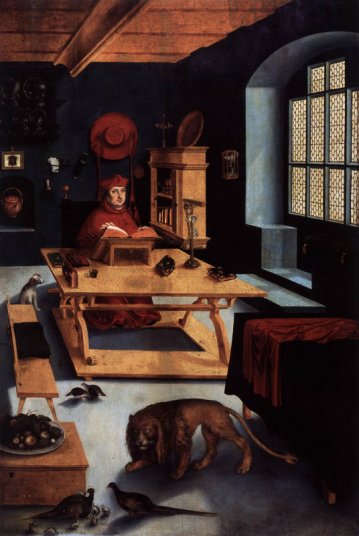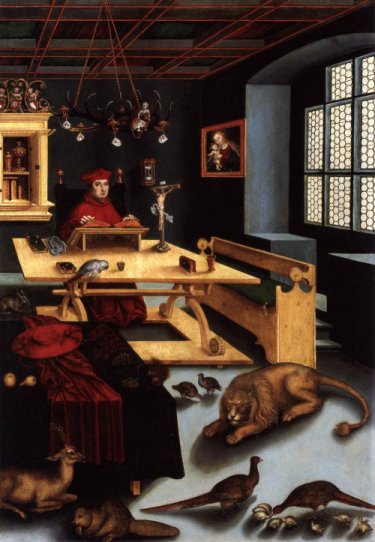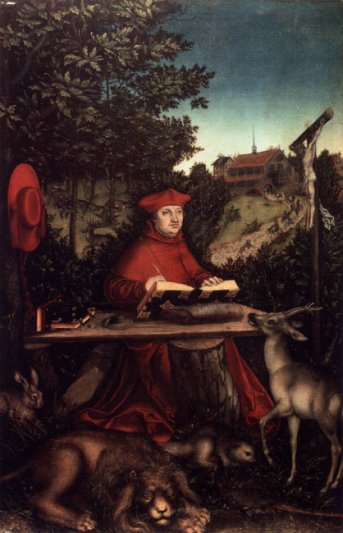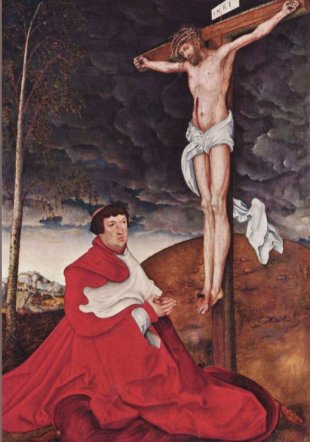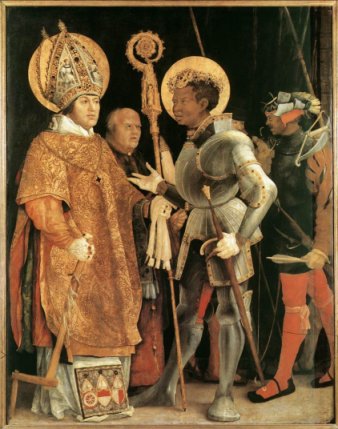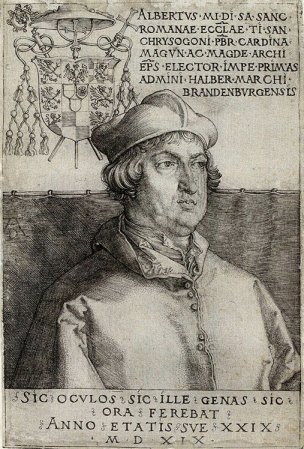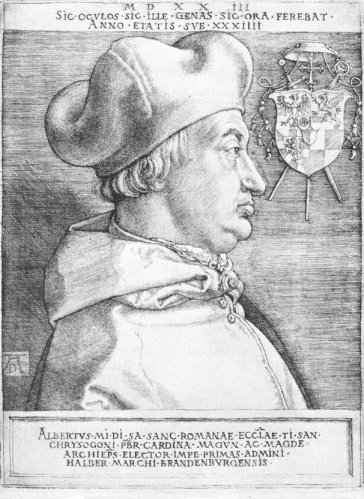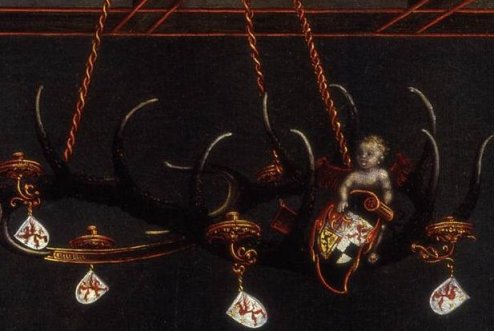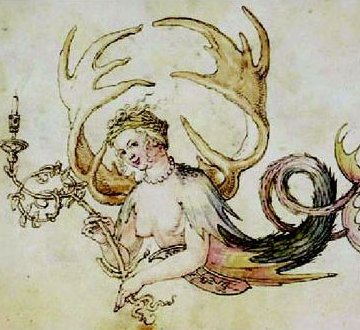|
Case
Study: Cardinal
Albrecht of Brandenburg as Saint Jerome |
|
|
|
|
|
Cardinal Albrecht (or Albert) of Brandenburg (1490 - 1545) was
Archbishop of Mainz from 1514, and Cardinal from 1518, at the age of 28. Life was short in
the fourteenth century and so people got on with it. |
|
|
|
|
|
This was never going to be enough for Albrecht. The following year he was in touch again for another picture of himself as Jerome, but in a desert setting this time. It's a rather more comfortable desert than Jerome's. Part of the Golden Legend story (the merchants bringing the donkey back to the monastery) is going on in the background. |
|
|
|
|
|
It didn't end there; here is Cranach's painting of Albrecht attending the crucifixion, and, by Grunwald, Albrecht pretending to be Saint Erasmus disputing with Saint Maurice. Didn't that preacher in Ecclesiastes have something to say about vanity? |
|
|
|
|
|
To return to the Jerome pictures. Albrecht/Jerome was clearly fond of pets, and each animal does represent some aspect of the character of the sitter - or some aspect the sitter wishes us to think he has. The beaver, for example, represents hard work, the parrot oratorical gifts, and the stag (or gazelle) is sometimes used as a symbol of Christ. This was one of Origen's ideas, so I'm not sure Jerome would have approved of it. The lion, of course, is there to ensure we know it's Jerome that Albrecht is pretending to be. Some of the other creatures have a more ambivalent meaning, as we'll see below. A curious fact is that it seems that Albrecht never actually sat for Cranach. His likeness was taken from these engravings by Durer. No fault of Durer's, but this is probably why Albrecht looks rather vacant in the paintings. |
|
|
|
|
|
|
|
|
|
|
|
This is a Leuchterweibchen, or female chandelier. Very popular at the time, they were made of antlers, on which were fixed candleholders and a human figure, usually an attractive woman. These were considered rather racy, and distinctly secular. Is Cranach trying to tell us something? (Albrecht might have wanted to look like Jerome, but he was less enthusiastic about his strictures on chastity. A lady called Magdalena Redinger, daughter of the local baker, was his long-term mistress.) And what about the peacock? Is he pointing a finger at Albrecht's vanity? It's a lovely theory, but sadly I don't think it really stands up. Albrecht was no fool, and if Cranach was trying it on he would have quickly spotted it and wouldn't have paid for the picture. If he had been a fool someone would have quietly taken him on one side and explained it to him. And it's a child or maybe an angel on the chandelier, not a woman. Sorry. Life is all too often more prosaic than conspiracy theorists would like it to be. |
|
